|
MAC Daddy
Guitar One Magazine
June 2003
Volume 6, Number 6
by Tom Lanham
Thirty years ago, Lindsey Buckingham brought his guitar and
songwriting aesthetics into the Fleetwood Mac fold. Since then, he has
resurrected the band from blues-rock oblivion and vaulted them to the
pinnacle of superstardom. On Say You Will the first studio album
from the classic lineup in 16 years, Buckingham proves that neither he nor
the band has stopped thinking about tomorrow.
It's probably the last thing on earth your typical rock fan is expecting
this spring ' a new Fleetwood Mac album. But Say You Will (Warner
Bros.), which reunites most of the group's stellar mid-70's lineup in a
timeless pop setting, is a rather remarkable reality. The epic 18-song
set, which features founding members Mick Fleetwood and John McVie as well
as 1973-87 alums Stevie Nicks and visionary axe-man Buckingham
(keyboardist Christine McVie has retired), runs the stylistic gamut from
chirpy sing-song pop ('Bleed To Love Her,' 'Steal Your Heart Away,'
'What's The World Coming To' ' recalling the band's best Rumourswork)
to boldly experimental Travis-picked fretburners ('Come,' 'Say Goodbye,'
'Red Rover'). Buckingham, who produced the set, asserts that the new
effort did not merely mark time as the Mac's other 'reunion,'
The Dance did in '96.
It began innocently enough nearly a decade ago when he began composing
tracks for what he imagined would be his fourth solo album. Things didn't
exactly go as planned. First, Buckingham bumped into Fleetwood and invited
him to slap skins for the Rob Cavallo-engineered solo sessions. Then John
McVie started dropping by. 'At that point, people started going, 'Uh-oh!
Look who's in the studio!'' recalls the extremely youthful-looking
53-year-od, relaxing in a Culver City Studios trailer during some recent
rehearsal downtime. 'And that led to a bunch of people saying, 'Well,
let's see if we can get Christine and Stevie on board and get something
going for Fleetwood Mac now. And we'll ask Lindsey to put his solo
material on the shelf.'' The guitarist reluctantly agreed, and The
Dance was the result. But afterwards, with Ms. McVie bowing out, the
quartet decided to soldier on, using the aforementioned songs ' with added
material contributed by Nicks ' as the foundation for Say You Will.
Buckingham's genius bubbles up from almost every note on the disc: his
breathy, crystalline tenor; his shrewd way with a Top 40-friendly hook;
and his warm fingerpicking style, performed on personally commissioned
guitars like the Turner Model 1. Not bad for a kid who never took a
lesson, and who, when asked about which instrument he employed on a
certain track, responds with chin-scratching 'Oh, I dunno. I never really
pay attention. Maybe it was my Strat, but it could even be a Strat through
a Roland.'
Now, just when the multiplatinum mega-hit album Rumours has been
inducted into the Grammy Hall of Fame, its driving creative force has
returned to remind old fans ' and indeed, a whole new generation or two '
that, as Buckingham puts it, 'not all rock and rollers peak in their 30s,
then decline, never to be heard from again.' He adds, 'I think this album
has the potential to give courage to a lot of musicians, some who are
maybe 15 years younger than us now, to not take their eye off the ball so
soon. It might even break down an old rock clich' or two.'
You've said that another factor in reforming the band was that the
outgoing regime at Warner Bros. initially turned down your solo stuff.
Yeah. Stevie was on the road, and she had done about six months before she
finished. But I said, 'Why don't we rent a house and start cutting some of
your tracks? We all know we wanna do a Fleetwood Mac album sooner or later
and I've already got 20 tracks. So we could start cutting it, and if it's
going well, great ' we'll do a Fleetwood Mac album.' And actually, the
irony at that time was that I had a deal with Warner Bros. and Fleetwood
Mac didn't. So we were free agents. We found a house and the three of us
started cutting tracks. Stevie sent over a bunch of old songs and we
started working on 'em. When she finally got off the road and we broke for
Christmas, she wrote four new songs. And all that turned into this album.
My songs were in the can, so all we really had to do was open the mix up
and get Stevie's voice on 'em. It was a thrill for me to be engineering
and producing, but it was also great to be involved in the hands-on part
of it; there were things that didn't exist when I left. So it was really a
pretty potent situation, even with the absence of Christine. We all missed
her, but at the same time it opened up a whole set of possibilities as a
three-piece band; everyone had about 33 percent more space to maneuver as
musicians.
So who's playing keyboards now?
Nobody! Well, here and there, but not too much. It's really mostly guitar,
with vocal pads and only a few keyboard parts.
You took some incredible aesthetic changes with Tusk, the
Rumours follow-up back in '79. You recorded most of your own stuff at
home on a 4-track, right?
That's what I started on. But by that time I had a 24-track at home, in
the bathroom or in one of the small rooms.
But you really pushed the envelope with that album, shocking longtime
fans in the process. It was a great affirmation of artistic purpose.
Yeah. And one of the most satisfying things about that now is that, even
though it created a lot of turmoil and dissent at the time ' not just the
process of making Tusk, but how it turned out ' Mick will tell you
now that it's his favorite album. So time has vindicated whatever happened
back then. We came out with Rumours, which was certainly a
beautiful album, musically and otherwise. But the musical soap-opera
aspect of it, I think, became more the focal point than the music. [The
McVies broke up during the recording, as did the romance between
Buckingham and Nicks.'Ed.] And at some point, the sales began to be more
attributable to the rumors than the music. But then you're in this spot:
Where do you go from there? Well you can make a Rumours Two and try
to repeat exactly the same thing for all the wrong reasons. In the
meantime, whatever ambivalence I'd had about that, or about the softness
of the band in general . . . music from England had come out, punk and New
Wave . . . . It wasn't really anything that influenced me directly, but it
did give me the courage to say, 'Hey, look, I wanna try some new
things. I think it's important that we don't get pigeonholed into this one
idea.' So what I did wasn't a new thing; it was just going back to
something I'd been doing for years with tape machines, which was to fuse
the writing process with the record-making process. When you work with a
group, it's kinda like making movies ' it's a more verbalized process to
get from Point A to Point B. But when you work alone with a tape machine
and your subconscious takes over, it's probably more like having a canvas
and painting. So I wanted to take these two things and put them together '
I knew there'd be a lot of new colors and surprising things that would
happen if I was allowed to take time and do that, even while the band was
working on a few things themselves. Then I'd bring the music back in and
we'd build on it. I had a meeting with the band, and everyone was dead set
against it. But somehow I managed to prevail and do it. And as the process
unfolded, everyone became quite enamored of what we were doing, and by the
end, everyone was totally on the same page. What I was doing was very much
to the left, but it was also a cool and appropriate thing to do for a
group that was trying to be credible and trying to keep their reasoning
correct. I mean, releasing 'Tusk' as a first single, compared to 'Go Your
Own Way' ' it took everybody by surprise, and that was part of the beauty
of it for me. It confounded everybody's expectations.
And now every marching band in the world has to learn 'Tusk' on day
one.
Ha! Yeah, I know. I know. It's crazy. So at the time, everyone was happy
with Tusk, until, of course, it didn't sell 16 million albums. And
then there was a backlash again ' I think it sold 3, 3 ' initially. I
don't know what it is now. So there was a political dictum that came down,
saying, 'Well, we're not going to do that again!' And I went 'Uhhh
. . . okay, fine.' So you get Mirage, which is not a bad record,
but it's sorta drifting in hazy waters. Tango In The Night was
better, but it was way under duress. So that was how Tusk came
about, and it's nice to know that it has somewhat of a broader appeal now
than it seemed to at the time.
What did you learn about guitar technique during Tusk?
Nothing. It wasn't about learning anything that you'd call 'state of the
art' or even correct. It was just improvising things, and whatever those
improvisations were, well, I couldn't begin to tell you what I was doing
back then. In the same way, I probably tried a hundred things in the last
year-and-a-half on this record, but I can't necessarily tell you what they
were. You just think of things; you try 'em, and they're gone. They either
work or they don't.
Are you still using the Turner guitar?
Yeah. Rick Turner designed that for me, and I'm actually rehearsing with
it right now. It solved a problem for me years ago, which was that when I
joined the band I was playing a Telecaster, and I played fingerstyle. But
that sound was a little too thin for the existing sound that they had,
with the piano, the bass, and drums. So I had to find something that fit
in, and a Les Paul was the best I could do. And well, a Les Paul is not a
great guitar for the way I play, and Gretsches weren't gonna do it,
because they were too percussive and really didn't respond on a level I
needed. It was very difficult to find a guitar that fit the bill, because
I had to adapt to a preexisting sound. Just in terms of my style, not
using a pick. I wasn't gonna give up the way I played; I just had to find
a guitar that would work for my style and fit in. I did use a Les Paul for
about a year, and then I asked Rick Turner to make me something that was
somewhere between a Les Paul and the kind of guitars he was building up in
Marlin County. And he did just that.
So how many different instruments were used on Say You Will?
Oh, I couldn't say. Not as many as you'd think. Maybe 12.
Sounds like a Martin strumming away on several numbers.
It is as Martin. I have an old D-18 that I've had since I was about
19.
And you've never, ever used a pick if you could help it?
Well, I will use a pick in the studio, sure, for strumming or
whatever. But not on stage. We have a couple of other guitar players now,
and they can use picks if they want. But oddly enough, because the
Turner was so across-the-board versatile onstage, in a way it made it not
the best guitar to use in the studio. It's useful at times, but you wanna
try to find something that is more specific. I have an old Strat I use a
lot, and one of those Roland VG-8's ' it's just got banks of sounds
in it, and you can get away with a lot of that, too. But still it's all
pretty low-tech stuff that I'm doing.
But The Dance must have reminded you of at least one thing '
just how much some of those legendary Mac standards really meant to
people, two decades later.
It's hard to be really be connected with that as one might think. But we
did have a funny experience about a year and a half ago, where somebody
was remixing the Rumours album in [ProTools] 5.1. Mick and I went
down to hear it, just to make sure we liked it, and my manager and a few
other people were there. And Mick and I were sitting there laughing, going
'Oh yeah! Remember when we did that? And this?' But by the time the album
was done, we looked around and there were two or three people crying.
Totally crying. To us, you do the work, you relate to a whole other
set of things. Your reference points are totally different in terms of
what it took to get it done. You're not necessarily in touch with the
illusion it creates, and you're too insulated to be in touch with the
collective effect it's having. Obviously, you figure if you're selling 16
million albums, then something's happening. But it doesn't mean
that you know what this is, or know those nuances, per se.
It's fascinating to note all the different levels on which you function
here ' the purse pop level of 'Say You Will,' 'Steal Your Heart Away,'
'What's The World Coming To' ' compared wit the sonically surreal level of
'Come,' 'Red Rover.'
Yeah. But we're not playing down to anyone. 'Steal' and 'World' are mine,
and the title track is Stevie's, and they all definitely fall into a
similar category. And for me, I dunno ' a song is something that you
always think about covering. And as much as it's interesting for me to
stray into that unknown realm of 'Red Rover' ' and we're working on 'Red
Rover' today ' it's interesting to do live. We've got three guitar players
running through this vibrato on/off thing, and the on/off is toed into a
specific click. And we have to play to that click or the timing's all off,
so we're working it all out and it's pretty trippy. But as much as that's
where my heart is in terms of pushing the envelope, and that 'new
frontier' kind of vibe . . . well, we're a pop band. And those pop songs
are always going to be there, and I would be very uncomfortable if we
didn't have some of those, 'cause that's where we stand. When Stevie and I
joined Fleetwood Mac, and suddenly it was this big commercial animal,
people would say, 'Did you just decide you were gonna do that?' And my
answer was always, 'Well, no ' this is what we do. This is what we like.'
Does everyone in the band just admit it now, that you're the alpha
personality?
Well, I dunno. I don't think anyone would wanna define it quite that way.
But one of the things that has happened is a male bonding kinda
thing. It was interesting to watch John and Mick talk, for example,
without Christine there. John was able to be a little looser, with no
baggage or buttons to be pushed. It was really neat to see some business
get taken care of that might've been 30 years old. And one more thing
about my guitar, in terms of theory: As a lead player, this album was
really more about having the space to be ' for lack of a better phrase '
more tasteless, more aggressive, and more masculine, and it was
appropriate.
And the most important aspect of the guitar that has moved forward is how
I'm using the fingerpicking. If you look at 'Red Rover' and 'Say Goodbye,'
that's all an extension of when I tried to play the song 'Big Love'
onstage with one guitar. I'd happened onto something that the audience
totally got, and it was also at the center of what I do. So how could I
build on that in a record-making way? Well, all of these things now, like
'Red Rover,' are from that idea ' one guitar doing all the work, with some
edges on it. And that's the most significant area in which I've grown as a
guitar player.
And you can hear it all over this disc, you're still in love with rock
'n' roll.
I am. I wonder what the future is, where music is going, because
it's an awfully strange world. But yes, music saved my life. And I'd
probably be in prison if I hadn't been doing this. With all the energy I
had to put out? I'd never make it in some job where I had to conform too
much.
Buckingham's Palace
Lindsey's Top
10 Guitar Moments
by Mike Mettler
If Oscars were given to guitar players, Lindsey Buckingham would be a dual
winner for Best Lead Performer and Best Performer in a Supporting
Role--though many would say his work as the latter overshadows his work as
the former. Buckingham might agree, as he tends to paint himself as a
craftsman who serves the song, and not the player, but he sure can wind
out with the best of 'em. Here are 10 of his most golden (and platinum)
moments.
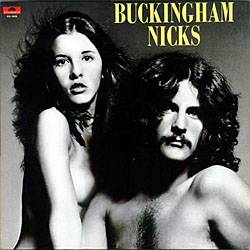
|
1.
Stephanie
Buckingham Nicks (Polydor, 1973)
While the melodic gem "Frozen Love" is the song that caught Mick
Fleetwood's ear and compelled him to ask the pair to join Fleetwood
Mac, it's this plaintive acoustic instrumental track that sets the
table for Buckingham's signature style. "Stephanie" (Stevie Nicks'
given first name) showcases his self-taught three-finger meshing of
Travis picking and banjo strumming, here played on a Martin D-18 and
recorded on a Sony 2-track. Direct ancestor to Fleetwood Mac's
"Landslide" and Rumour's "Never Going Back Again" |
| |
|
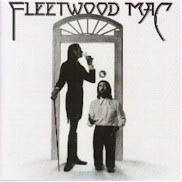 |
2.
World Turning
Fleetwood Mac (Reprise, 1975)
A turgid footstomper in a drop D that combines two guitar parts and
features a chorus burning with a series of thumb-picked bass notes. |
| |
|
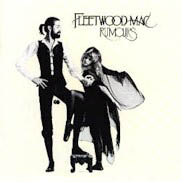 |
3.
Go Your Own Way
Rumours (Warner Bros., 1977)
Contrary to popular, er, rumour, there's no 12-string at work here,
just a triple-tracked six-string capped at the 8th fret. It's a rare
occasion where Buckingham uses a pick, but he does play that frenzied,
sustained outro solo on a Les Paul with his fingers.
|
| |
|
 |
4.
The Chain
Rumours (Warner Bros., 1977)
Mac's mantra, with a Travis-picked intro that morphs into a beautiful
(albeit edgy) support for the band's elegant three-part harmonies.
|
| |
|
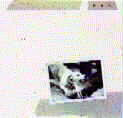 |
5.
Tusk
(Warner Bros., 1979)
The anti-Rumours, or Buckingham's Pet Sounds. Mostly
recorded on his home studio's 24-track MCI board, Tusk debuts
Buckingham's custom Turner Model 1, essentially an Alembic with a Les
Paul mentality. Peppered with punky, quirky tracks like the bleating
"The Ledge," and the baroque "Save Me A Place," and the insistent
"That's Enough for Me."
|
| |
|
 |
6.
I'm So Afraid
Fleetwood Mac Live (Warner Bros., 1981)
More urgent than the version on The Dance, but on that DVD, you
can watch as Buckingham plants his thumb near the soundhole and see
how his flailing fingers unleash a hurricane of all the right notes as
the song gets darker and darker and darker.
|
| |
|
 |
7.
Tango In The Night
Tango In The Night (Warner Bros., 1987)
This comeback disc's title track, recorded at 'The Slope'
(Buckingham's Bel Air home studio), is filled with '80s-style power
chording, epic shred, and a vibe in the verses reminiscent of "Play in
the Rain," a hypnotic cut from Buckingham's 1984 solo effort.
|
| |
|
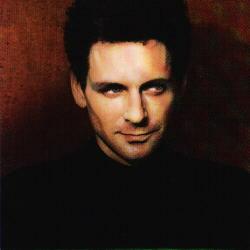 |
8.
This Is The Time
Out of the Cradle (Reprise, 1992)
Killer track from Buckingham's third solo album, complete with an
Oriental-style coda and a torrential rideout. Hands-down his best
solo, done on a '63 hybrid Strat and recorded direct. Preceded by a
mono, varispeeded classical intro deftly performed on a fretless
Steinberger
|
| |
|
 |
9-10 Big Love and Go Insane
The Dance DVD (Reprise, 1997)
Stripped-down, dramatic solo reworkings of these two tunes are a
one-two punch on DVD ("Go Insane" isn't on the companion CD),
accenting Buckingham's acoustic prowess. You'll forget there's a full
band waiting offstage as he gamely attacks his nylon-stringed
solid-body Gibson Chet Atkins acoustic/electric (capoed at the 4th
fret for 'Insane"). Fingerpickin' good. |

|

